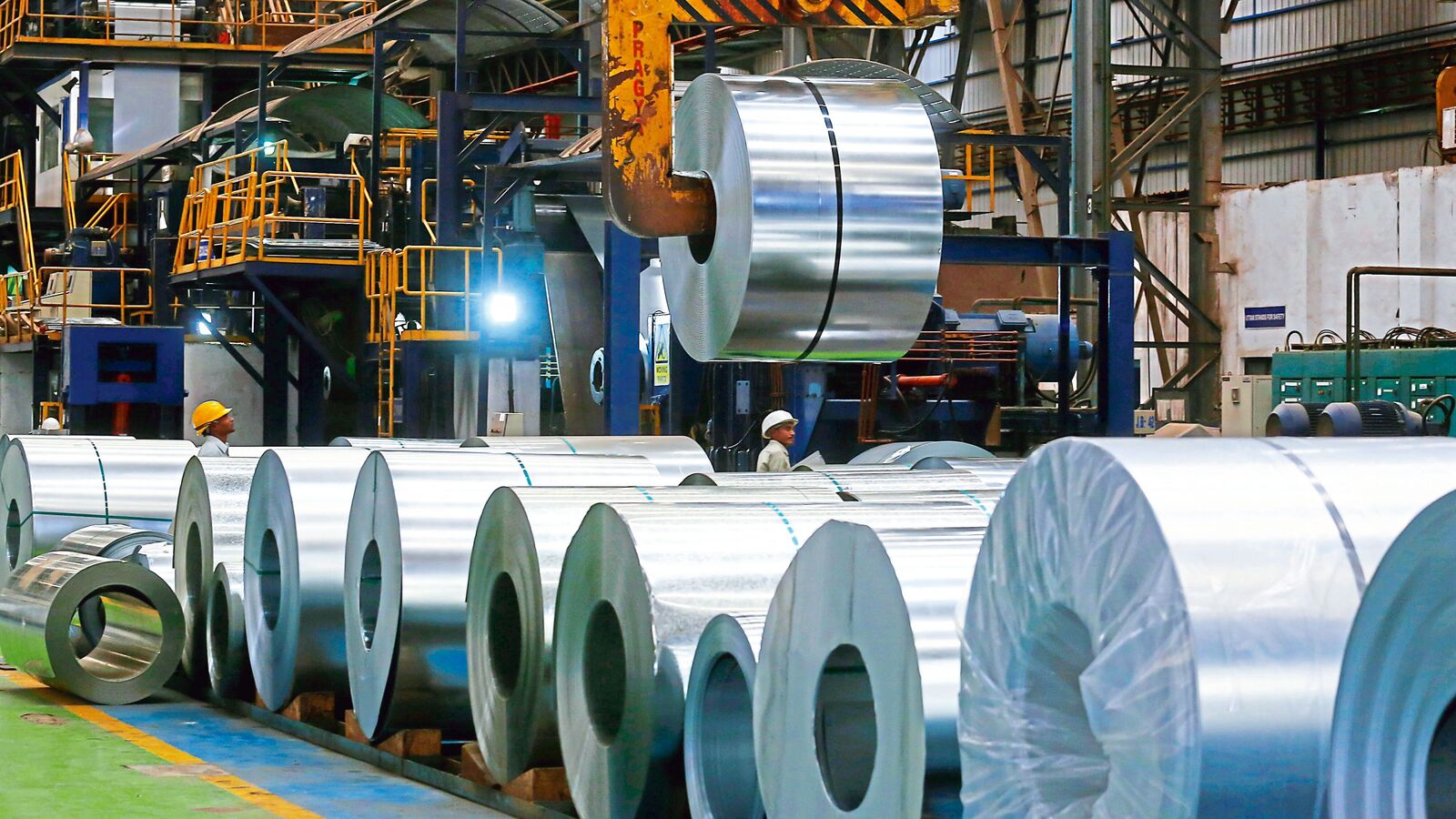“In Q3 FY25, at an aggregate level, the Ebitda margin improvement in the Indian auto sector was primarily driven by a favourable product mix, operational efficiencies, strong market demand, and lower commodity costs with government incentives,” Nirav Karkera, head of research at Fisdom, a wealth management platform. “Among these, the benefits accrued on account of lower commodity costs may not be very sustainable considering upside risks to input prices,” Karkera said.
Ebitda, a measure of profitability, stands for earnings before interest, tax, depreciation and amortization.
Also read | What’s at stake for India amid Trump’s tariff war on steel, aluminium, in charts
Safeguard duty
India is exploring the levy of a safeguard duty on steel imports after complaints from domestic steelmakers, who argue that overseas companies were dumping the alloy in India. If such a duty is levied, local prices will rise, eroding input cost gains for automakers.
The government must take a balanced view of the impact of a safeguard duty on steel-consuming industries, Mahindra and Mahindra (M&M) managing director Anish Shah told reporters earlier this month. “Our sense is that the government will look at the impact on all user industries and ensure that the specific problem around dumping is addressed. But (that) shouldn’t really translate into higher prices that impact all industries,” Shah said. “Because that will essentially take inflation up and take away some of the good work that has been done in terms of demand stimulus.”
M&M’s industry-leading 15.5% standalone Ebitda margin during the December quarter was 1.3 percentage points above the previous year’s. The company attributed this to the higher demand for its cars, a price hike it took on select models at the beginning of the quarter, lower discounting, and benign steel prices.
Also read | Trump is scrambling global automakers’ reliance on America
Material costs
The impact of cheaper inputs was much sharper for Tata Motors, whose standalone Ebitda margin improved by 1.2 percentage points to 11.8% despite its revenues falling 9%. Its material cost during the quarter fell by almost a fifth year-on-year.
At Ashok Leyland, Ebitda margin improved by 0.8 percentage points year-on-year to 12.8% after a 3% fall in material cost, even as revenue grew by over 2%.
“There has been a substantial reduction in material costs, which has happened predominantly because of the softening of the steel prices. That has really helped us to post a better margin,” K.M. Balaji, chief financial officer, Ashok Leyland told Mint in an interview last week.
When asked about how Ashok Leyland will counter an increase in steel prices, executive chairman Dheeraj Hinduja said the company was exploring other avenues to cut costs and improve efficiency.
“I would say that naturally, it has an impact, and we’ll have to deal with that impact, but we will have to find ways to overcome any steel price increases as well,” he said.
Also read | Anarchy or autocracy: What exactly is the Trump presidency aiming for?
During the quarter under review, domestic car sales grew 4.5% to just over 1 million units, commercial vehicle sales grew 1.2% to about 238,000 units, while two-wheeler sales grew by 3% to just under 4.9 million units, as per data from Society of Indian Automotive Manufacturers (SIAM)
Why are steel prices falling?
While prices of steel vary depending on the grade, benchmark hot-rolled coils of steel, on average, cost 15% less during the December quarter compared to last year, as per data from BigMint, a market intelligence firm.
Indian steelmakers have argued that a rise in cheap imports has forced them to cut their prices to keep market share. This has pinched their margins, making it unviable for them to invest in capacity expansion, they say.
Prices of steel are falling globally due to a lull in demand from key consumers. China, which makes and consumes about half of the world’s steel, is facing an economic slowdown and a collapse in its real estate market. Real estate is the highest consumer of steel in China. Demand for the alloy is weak in other economies like Europe too, leaving India as the only large market with a growing appetite for steel.
Also read | Mint Primer: Has Donald Trump just opened steel import floodgates?
Steel prices may face further pressure after the US levies 25% tariff on all its steel imports starting 12 March. This could result in more steel landing on Indian shores, experts believe.
“There will be a diversion of exporter inventory to other importer-nations at aggressive prices, especially in a milieu of increasing global competition,” said Sehul Bhatt, director-research, Crisil Intelligence. “This could bring down the prices of steel in India, (which are) already trending at four-year lows.”
Catch all the Industry News, Banking News and Updates on Live Mint. Download The Mint News App to get Daily Market Updates.
MoreLess
Cheap steel, Steel, automakers, steel-consuming industries, safeguard duty, auto firms, Ebitda margin, Ashok Leyland, Mahindra, Tata Motors, steel price, US tariff
#Cheap #steel #brought #relief #automakers #bonanza

